Break through the wall without breaking a head. H. 2
Often the situation was such that the force of systematic enemy fire required the use of additional means of attack preparation engineering. One of such means was engineering bridgeheads, which made it possible to secretly concentrate troops before a direct attack.
Engineering assault bridgehead. Manual to fight for the fortified bands. According to the instructions and edited by the commander of the 5 army of the general from the cavalry Gurko. Ed. 4., Tipo-Lithography of the Special Army headquarters, 1916.
Another was the mine war - the methodical destruction of enemy positions by medieval methods. To lay the mines, they pre-dug a deep well, from the bottom of which, in the direction of the enemy’s trenches, there was a mine gallery, in order to prevent the land from falling down and covered with wooden frames from the inside. In the place designated for the explosion of a mine, a special recess was torn off, into which the charge, called the mining one, was placed. The charge was closed with earth and after a while it exploded under the key point of the enemy’s position. But the enemy was not idle - he also led the underground galleries, listened to the knock of the work of other mine workers. If he succeeded in undermining them, he laid his forge and blew up the enemy along with the result of his work.
That is why the mine war was difficult and risky. The opposition of the enemy unnerved the miners and caused important mistakes. Often the forge exploded prematurely and destroyed its buildings and artificial obstacles. Mine warfare was fought in the Carpathians, near Letzen, Illukstom, and other sectors of the front. A rather vigorous mine warfare was conducted in the spring of 1915 on the Warsaw sector in the 2 Army — an attempt was made to seize the sector from the fols. Mogely on r. Ravke. The farm was able to occupy the mine after the explosion. The Germans answered - and a mine warrior began, which was very nervous about the troops, and in the end brought only losses to both sides - without tangible tactical success. And in March, 1915 in the Carpathians, in the battles for Tsvinin, a fierce battle for every meter of space went on the ground and under the ground - having blown up the first mine in the advanced trenches of the German 3 Grenadier Regiment, 17 in March managed to establish itself in the undermined part of the enemy fortifications.
Considering the fact that in the struggle for the fortified lines on every frontier, to which the troops went out towards the night, it was necessary to create defensive lines to fight the enemy’s counterattacks, the attacker had to provide his men with the necessary building material, wire, stakes, etc.
On the Russian front, the first positional forms of struggle arose in the winter of the 1914 / 15. - they were especially bright on the Polish theater of operations (in battles on the Bzura river), as well as in East Prussia.
Attempts by the parties to use tactics developed during the war of maneuver led to great losses. Thus, the officer of the Caucasian Grenadier Division, Lieutenant K. Popov recalled the battles on the river. Bzura - a tributary of the Vistula. Ford the river was not everywhere passable and not yet frozen. 8 December 1914 was a big battle, during which the German regiment that had crossed over was completely destroyed, and the 500 man from its composition was captured. But the Germans crossed again - now at Brokhov, and the 237 Infantry Regiment, supported by 3, was ordered by the grenadier-Erivanians to drop the crossed Germans. The distance to the German trenches reached a kilometer, and the terrain on which to attack was flat as a table, with the exception of a few wetlands. The enemy anticipated the attack - single bullets regularly buzzed over the heads of the Russians. When the attack began - the German rocket lit up the whole field ... And the fire hell began: rifle fire and drumming of machine guns of the enemy were supplemented with artillery fire, which beat shrapnel from the opposite bank of the river. But, in spite of everything, the avalanche of Russian fighters rushed forward - trying to overcome the distance from the Germans as soon as possible. The lieutenant recalled the fierce faces of his fighters, shouts of "Hurray" and the steel wall of bayonets. He himself squeezed “Nagan” with cold-nosed fingers and also rushed forward. But the mass of infantrymen was faring with amazing speed - and the fiery tongues of the attacking machine guns and the line of enemy trenches, surrounded by the border of flashes from rifle shots, were already visible. The new rocket flashed the following picture: the 50 man of the infantry stopped in indecision at the parapet of the enemy's trench. Someone with a shout of "hurray" rushed forward, he was supported by other fighters - and they fell, mowed down with machine-gun fire. On the field, everything lay - most people, of course, lay down. The Germans did not cease fire, rockets were constantly hoisting into the sky. After lying 10 minutes, the lieutenant began to crawl back. The whole field was moaning with cries: "Save, help," "Do not leave me." But the snow, like a shroud, covered the lying mass of people. It was impossible to even think about sanitary aid - right up until the morning the Germans maintained a strong fire. Everyone who could walk or crawl, gradually left. And most of the wounded left to lie on the field. Every night, the fighters sent to this field picked up the corpses and put them into a mass grave dug behind the Russian trenches [Popov KS. Memoirs of the Caucasian Grenadier 1914 — 1920. M., 2007. C. 54-58].
The most prominent specifics of positional warfare were revealed in January of 1915 in the battles of Volya Shidlovskaya. In the summer of 1915, maneuverable military operations were supplemented with episodes of positional warfare (for example, during the battles of Lyubachev).
Autumn-winter 1915 led to the stabilization of the Russian front.
The realities of positional warfare.
This period was marked by the first major operation of the Russian troops, carried out in the new conditions and ended in failure.
7-th and 9-th Army of the South-Western Front 14 December 1915 - 6 January 1916 conducted an offensive operation on the river. Strypa (we will describe it in detail in the near future). Teeming with the tactical mistakes of the Russian troops, this operation did not lead to a breakthrough of the enemy’s tactical defense. As a result of this operation, the Russian command stated the following shortcomings:
1. Lack of infantry interaction with artillery. There were no artillery observers in the advanced offensive units, as a result of which the infantry not only could not have the necessary artillery support during enemy counterattacks, but often the artillery shot its infantry. Artillery, especially heavy, was set too far, and its shooting was not sufficiently thought out.
2. Deficiencies in management. The infantry often broke into enemy positions, capturing prisoners and trophies, but in all cases could not hold them and threw them back with great losses. The main reason for the instability of the infantry is the lag in reserves and the inability to secure captured tracts of terrain.
The commander of the 7 Army General of Infantry D. G. Shcherbachev noted: “1) ... the headgear was given an insufficiently defined task; 2) ... with the first burst there were no commanders in place who ... would establish order; 3) there was no connection to the rear; 4) there were no advanced gunnery observers " [Volpe A. Frontal hit. The evolution of forms of operational maneuver in the positional period of world war. M., 1931. C. 240].
One of the main reasons for the tactical failure was that the advancing units of the 7 and 9 armies were forced to approach the enemy for a long time - covering a large distance under their actual fire. The following order was given to one of the chiefs: “All infantry units assigned to the strike must be covered in trenches at a distance of no closer than 1000 (!) Steps (tactical nonsense - AO) from the attacking position of the enemy " [Note on operations on the South-Western Front in December 1915 and the North and West in March 1916. Secret. Typography of the Supreme Commander, 1916. C. 20]. Thus, taking into account that the enemy’s positions were not adequately reconnoitered, and his fire system was not destroyed, the huge losses incurred earlier than they approached the main fortified line of the enemy, and even greater losses when they broke into enemy positions. .
Storm fire artillery.
The command of the 9 Army noted:
"In most cases it will be relatively easy to approach the fortified position of the enemy over the distance 1 - 2 versts and consolidate there, but further: bringing closer will require a lot of effort, time (depending on the situation, several days, and sometimes even weeks) and assistance mainly heavy artillery. The rapprochement must go on continuously on a broad front and continue until the units approach the enemy’s trenches so (approximately 40-50 steps) so that during the attack they can reach these fortifications without stopping. During the rapprochement with each new stop, the parts must be firmly fixed. Having thus reached very close to the enemy and occupying a starting position for the attack, it is necessary to immediately proceed to equip it with a fortification in order to build a bridgehead that would allow both the warhead and the reserves as close as possible to the enemy ” [Volpe A. Decree. cit. C. 240-241].
Finally, the commander-in-chief of the armies of the South-Western Front, General from artillery N. I. Ivanov, 8, February 1916, wrote: “Under the present conditions for conducting operations, it will be difficult to often rely on the element of surprise attack. Therefore, in order to draw closer to the enemy and facilitate the production of the assault, it is necessary to practice on the whole front a gradual advance in small parts, resorting to nighttime advancements, saps and even a mine war with the indispensable, constant, solid strengthening of the space covered. The gradual development of trenches by moving forward in small parts and establishing their connection with the main lines will create new positions close to the enemy, will enable with less losses to get to his wire barriers and begin to damage them, destroy and pave the aisles. ” [Ibid. C. 241].
According to the results of the operation, serious tactical conclusions were made. Developed their own tactical recommendations, adopted the experience of conducting a positional war on the French front.
Among the most important conclusions concerning the actions of the troops during the breakthrough of the enemy's echeloned defense were the following:
1) The breakthrough area must be wide enough - 20-30 km (to eliminate the possibility for enemy artillery to shoot it from the flanks - to neutralize the enemy's fire tongs);
2) Artillery maneuvering is a symbolic element of success. Artillery should be able to accompany the advance of the infantry, increase the force of strikes and conduct repeated fire attacks;
3) The transfer of projectiles and other material and technical objects to the breakthrough area should be given the closest attention;
4) Qualitative engineering and aerial reconnaissance is the key to competently preparing an effective offensive operation;
5) Artillery should be massaged, reducing to special groups under the leadership of the responsible chief;
6) Particular attention should be paid to the exact calculation of the required number of artillery barrels used to break through, the power of fire and the amount of ammunition.
Recommendations for the attacking troops noted that the starting positions for infantry attack should be at a distance of 200-250 m from the enemy’s trenches - otherwise it would take a long time to run under fire, and artillery from large distances would not be able to effectively support the offensive. Such a position should provide the infantryman (subject to the destruction of artificial obstacles) the opportunity to reach enemy trenches in one roll. The rapprochement must be carried out in advance, both by engineering methods (for the first time it was about creating assault bridgeheads), and by capturing tactically important sections of the terrain.
Engineering equipment areas attached special importance. To give the advancing infantry a strike the necessary strength, it is necessary to correctly determine the size of the combat sectors (not to make them too broad) and to have strong reserves. It was not recommended to form consolidated corps for the offensive, and also to have more than 5 corps in the shock army. Finally, thorough technical support is needed for the advancing infantry — communications equipment, hand grenades, barbed wire scissors, pyroxylin sticks, canvas mats to overcome artificial obstacles.
Artillery must pay the utmost attention to the destruction of artificial obstacles, machine-gun blockhouses and nests. The artillery attack plan should have provided for the solution of the following tasks: a) for how long and in what way will the passageways be made in the wire barriers; b) how far the enemy’s trenches will be felled; c) which fortified points should be destroyed. Artillery reconnaissance, competent choice of positions, clear statement of feasible combat missions, supply of ammunition, interaction with infantry and maneuvering are the most important questions that the artillery chief should pay particular attention to. Artillery actions in positional combat must be distinguished by a careful and methodical nature.
Particular importance was attached to infantry escort artillery, for “Due to the extreme dependence of infantry on artillery fire and equipment of the area ... against the defensive structures protected by artificial obstacles, the infantry has no offensive power” [Note on the execution of operations. C. 34].
Indeed, as the experience of the first operations in a positional war has shown, even the presence of strong reserves will not succeed. After all, if there are no passages in the barriers and the enemy’s fire system is not suppressed, then it is impossible to bring them into battle. The broken through units without artillery support, thrown by enemy hand grenades and counterattacked by his reserves, will either be destroyed or thrown back to their original position.
And here the infantry escort artillery plays a special role. Thus, the 14 and 15 Siberian rifle regiments (the 2 Siberian Army Corps) were armed with regimental 37-mm cannons adapted for movement (or rather, rolling on their hands) along narrow infantry trenches and for action in the offensive combat in advanced rifle chains - along with machine guns. These small guns during the fighting near Prasnysh led the Siberians to brilliant actions, which covered the glory of the 14, 15 and 16 of the Siberian infantry regiments. Similarly, in the same battles of the Second Prasnysh operation, the 3 th mountain and artillery division of the 4 Siberian Rifle Artillery Brigade brilliantly acted, attached to the battery regiments as infantry escort artillery.
Due to their lightness, 37-mm guns in battle did not leave the infantry chains, which in many respects gave the Russian offensive success, expressed in the heavy defeat of the Germans and their withdrawal to their border. The gunners believed in these guns more than in the rest of the artillery of their divisions — that is, on. these tools gave the Siberian regiments not only tactical stability, but also became a landmark factor of moral support.
Tactical recommendations in relation to defense in a positional war also contained novels. In particular, it was prescribed to occupy the first line of defense with relatively weak forces (in order to minimize losses in people and fire weapons), paying particular attention to strengthening the 2 line of trenches (this is also the starting position for counterattacks). Positions were indicated in such a way that there were no points left in the hands of the enemy, from where his artillery observers could see the Russian positions - after all, experience had shown that everything that was visible to the artillery observer would almost certainly be destroyed. For example, the commander-in-chief of the armies of the Western Front, in his instructions in January, 1916 ordered “no dugout against heavy shells in the first line to build” [Strengthening positions // Military engineering collection. Book 1. 1918. C. 135]. It was noted that the loss of the 1 line is not the end of the battle, but only its start.
It was recognized that it was necessary to have at least 3-x defense lines, each with its own artificial obstacles (at least 5-ti rows of stakes in wire barriers, 2-x such barriers are desirable) and strong points. The time spent by the enemy’s artillery to change positions for the attack of the next lines of defense will help the defender - using a counterattack - to eliminate the breakthrough. Positions should consist of autonomous "centers of resistance" (interconnected trenches), each of which will be able to successfully defend for a long time and prevent the enemy from expanding towards the flanks. Resistance centers should be in fire and normal communication with each other and be located in 1 – 1,5 thousands of steps one from another. Reinforcements should be grouped and not be continuous lines.
To be continued
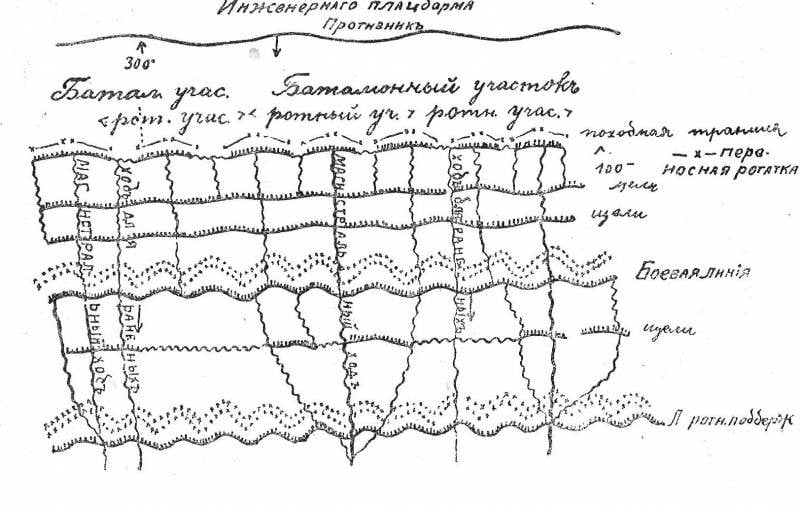
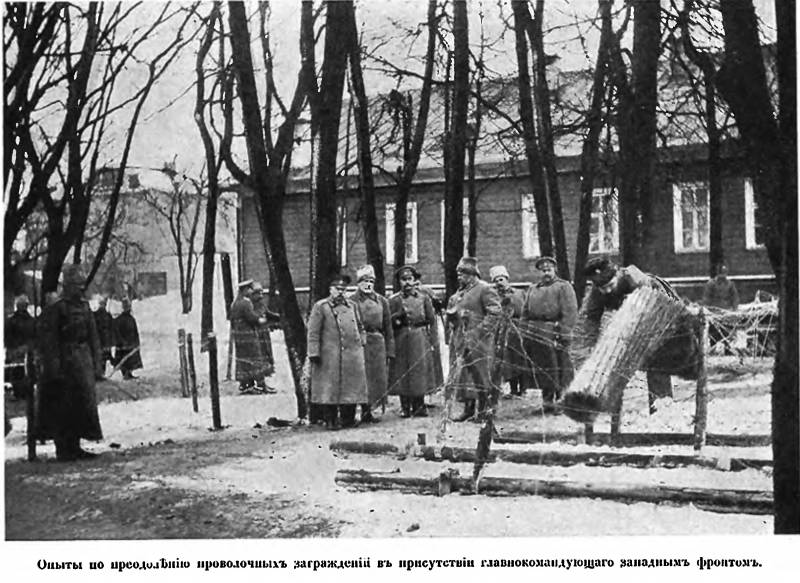
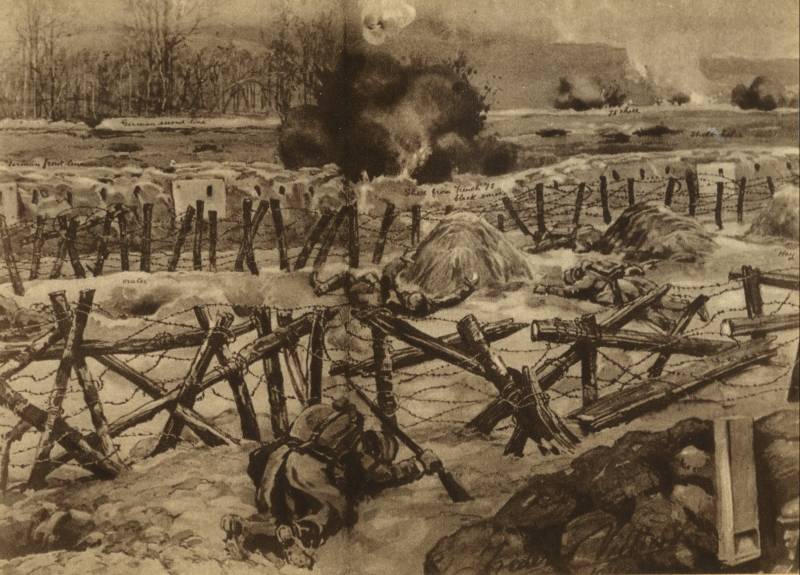
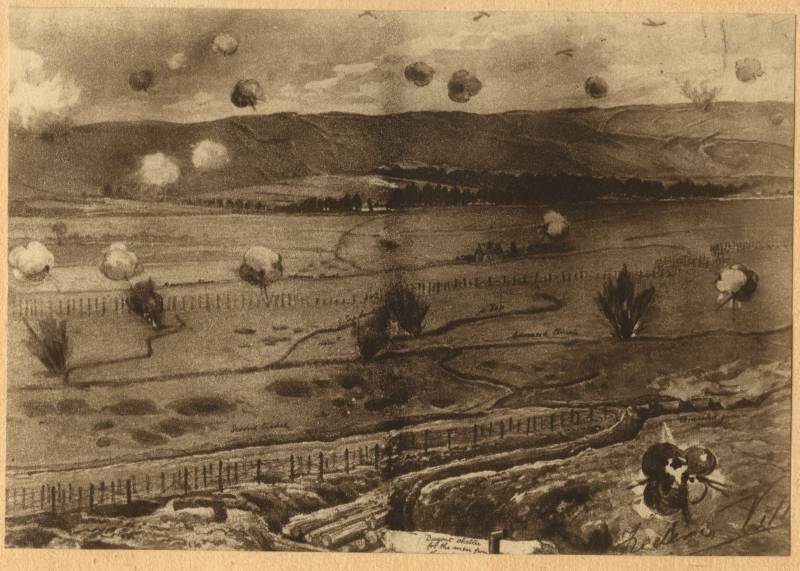
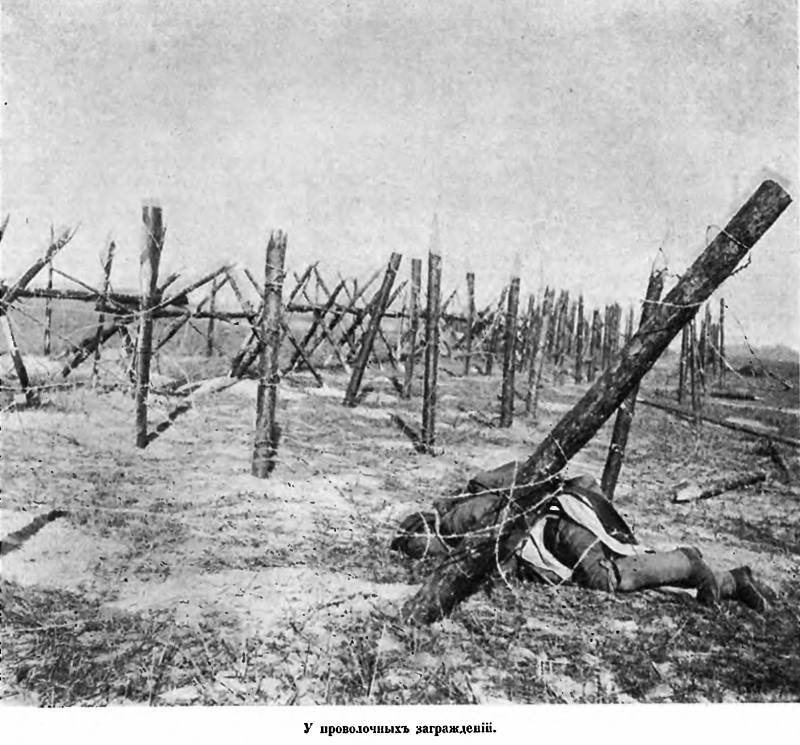
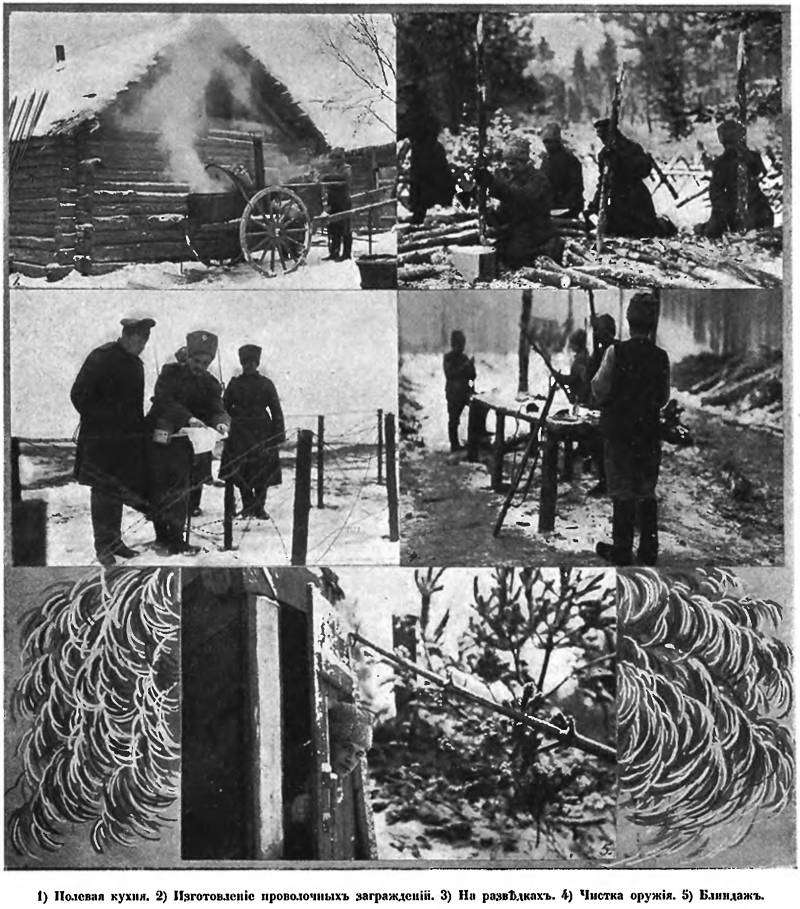
Information